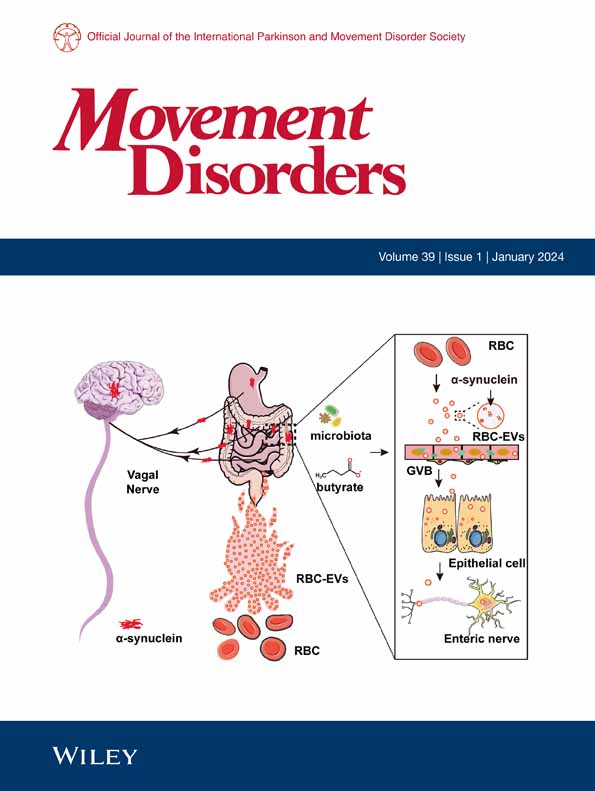Hematopoietic Stem Cell Transplantation in an International Cohort of Colony Stimulating Factor-1 Receptor (CSF1R)-Related Disorder.
IF 7.6
1区 医学
Q1 CLINICAL NEUROLOGY
引用次数: 0
Abstract
BACKGROUND Colony stimulating factor-1 receptor (CSF1R)-related disorder (CSF1R-RD) is an autosomal dominant, rapidly progressive, demyelinating disease leading to death usually within a few years. Because of the central role of CSF1R in microglia functions, allogeneic hematopoietic stem cell transplantation (HSCT) has been suggested as a therapy for CSF1R-RD. OBJECTIVES To report multicenter clinical (Expanded Disability Scoring Scale [EDSS]), neurocognitive), neuroimaging (Sundal score), and biological (neurofilament light chain [NfL]) outcomes after HSCT in CSF1R-RD. METHODS We report an international cohort of 17 adult patients (8 females/9 males, 43.3 ± 9.4 years) who were treated in seven transplant centers. Patients were evaluated for a median of 2.5 years post-HSCT, including one patient with follow-up of 8 years. We also report neurological outcomes of the first child transplanted to date with biallelic CSF1R variants. RESULTS In the first 6 months post-HSCT, 2 patients died from early complications of myeloablative transplantation, and clinical and radiological severity scores worsened in most surviving adult patients. At 12 months post-HSCT, most patients completely stabilized or improved in certain clinical domains. Radiological scores fully stabilized or slightly improved in all but one of the patients. Plasma/serum NfL sharply decreased in most patients after transplantation. Notably, 7/8 adult patients who received a reduced-intensity conditioning regimen displayed similar neurological outcomes as patients who underwent myeloablative transplantation. CONCLUSIONS After an initial clinical and radiological deterioration in the first 6 months post-transplantation, HSCT can halt disease progression in patients with CSF1R-RD, regardless of their presenting clinical symptoms. The possibility of reduced conditioning regimens in CSF1R-RD opens the way to treat older patients. © 2025 The Author(s). Movement Disorders published by Wiley Periodicals LLC on behalf of International Parkinson and Movement Disorder Society.集落刺激因子-1受体(CSF1R)相关疾病的国际队列造血干细胞移植
背景:集落刺激因子-1受体(CSF1R)相关疾病(CSF1R- rd)是一种常染色体显性、快速进展的脱髓鞘疾病,通常在几年内导致死亡。由于CSF1R在小胶质细胞功能中的核心作用,异体造血干细胞移植(HSCT)被认为是治疗CSF1R- rd的一种方法。目的报告CSF1R-RD患者HSCT后的多中心临床(扩展残疾评分量表[EDSS])、神经认知、神经影像学(Sundal评分)和生物学(神经丝轻链[NfL])结果。方法:我们报告了17例在7个移植中心接受治疗的成年患者(8女9男,43.3±9.4岁)的国际队列研究。对患者进行评估的中位时间为hsct后2.5年,其中1例患者随访8年。我们还报道了迄今为止首例移植双等位基因CSF1R变异的儿童的神经学结果。结果在移植后的前6个月,2例患者死于清髓移植的早期并发症,大多数存活的成人患者的临床和放射学严重程度评分恶化。在移植后12个月,大多数患者在某些临床领域完全稳定或改善。除一名患者外,所有患者的放射学评分均完全稳定或略有改善。大多数患者在移植后血浆/血清NfL急剧下降。值得注意的是,7/8接受低强度调节方案的成年患者与接受清髓移植的患者表现出相似的神经系统预后。结论:在移植后的前6个月出现最初的临床和放射学恶化后,HSCT可以阻止CSF1R-RD患者的疾病进展,无论他们的临床症状如何。CSF1R-RD中减少调理方案的可能性为治疗老年患者开辟了道路。©2025作者。Wiley期刊有限责任公司代表国际帕金森和运动障碍学会出版的《运动障碍》。
本文章由计算机程序翻译,如有差异,请以英文原文为准。
求助全文
约1分钟内获得全文
求助全文
来源期刊

Movement Disorders
医学-临床神经学
CiteScore
13.30
自引率
8.10%
发文量
371
审稿时长
12 months
期刊介绍:
Movement Disorders publishes a variety of content types including Reviews, Viewpoints, Full Length Articles, Historical Reports, Brief Reports, and Letters. The journal considers original manuscripts on topics related to the diagnosis, therapeutics, pharmacology, biochemistry, physiology, etiology, genetics, and epidemiology of movement disorders. Appropriate topics include Parkinsonism, Chorea, Tremors, Dystonia, Myoclonus, Tics, Tardive Dyskinesia, Spasticity, and Ataxia.
 求助内容:
求助内容: 应助结果提醒方式:
应助结果提醒方式:


